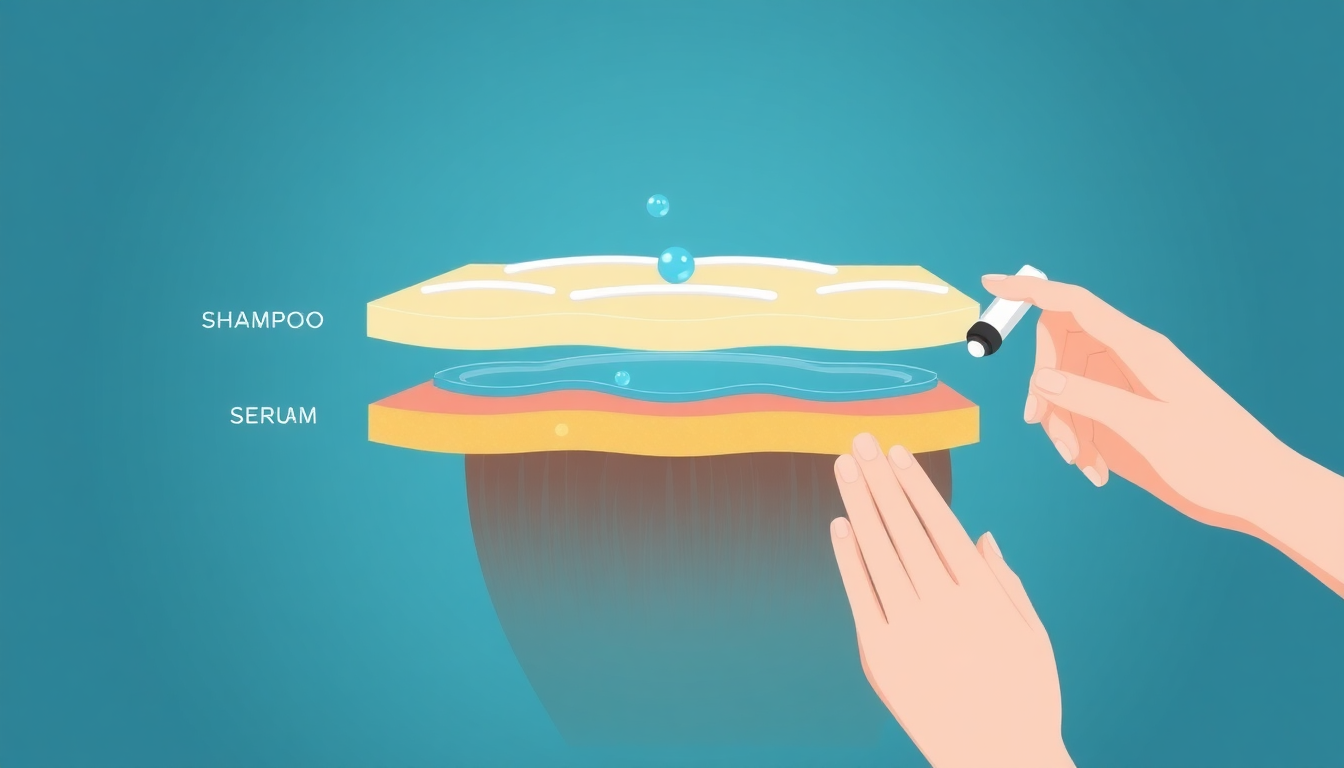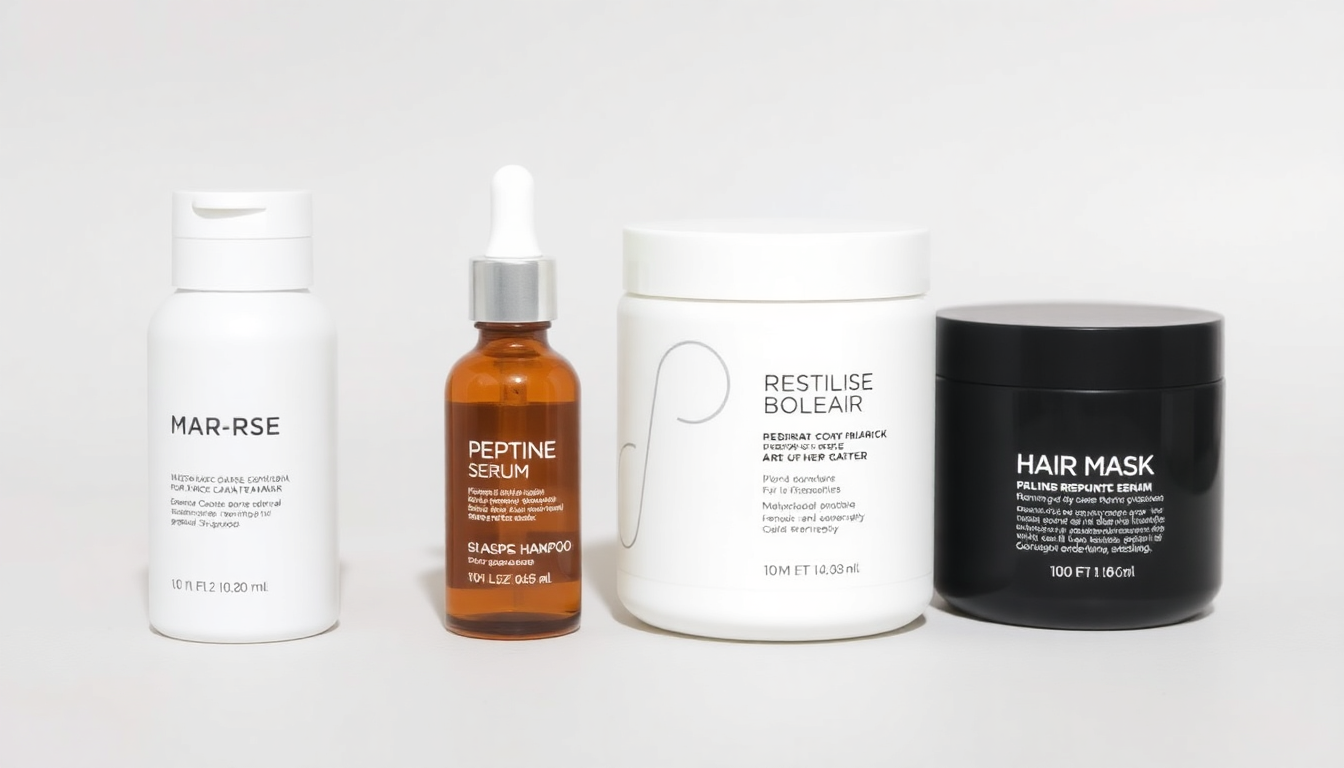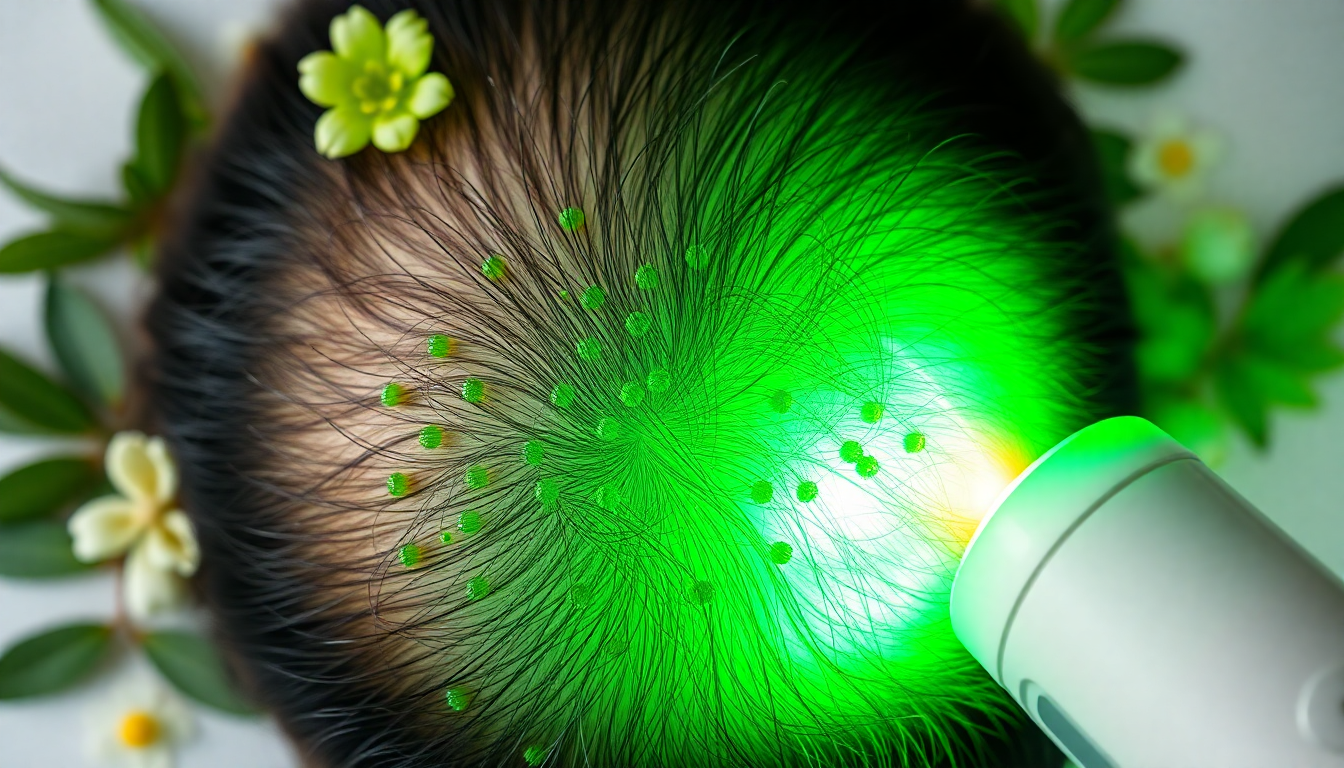Introduction — Why sequencing, choice and timing matter
If you want thicker, fuller-looking hair, product choice is just half the battle. The other half is sequence: the order you cleanse, treat and stimulate the scalp affects absorption, local biology and long-term outcomes. This long-form, science-informed tutorial compares shampoo types, peptide serums and at-home scalp devices, explains the mechanisms, and gives clear, step-by-step routines you can adapt whether you’re a beginner or layering multiple therapies.
Quick overview: the three pillars
- Cleanse: choose the right shampoo to remove excess oil, flakes and styling product without over-stripping the hair.
- Treat: apply peptide serums or topical actives that modulate follicle biology, inflammation and extracellular matrix.
- Stimulate: use at-home devices (LLLT, microneedling, scalp massagers) to improve cellular activity, blood flow and topical uptake.
Hair biology 101: what affects thickness
Understanding why certain steps work helps you choose and sequence more effectively.
- Hair growth cycle: anagen (growth), catagen (transition), telogen (rest). Visible improvement requires more follicles in anagen and stronger hair shafts, which takes months.
- Follicle miniaturization: in androgenetic alopecia (genetic hair thinning), follicles shrink. Some treatments (topical drugs, peptides, LLLT) can slow or partially reverse miniaturization.
- Scalp environment: inflammation, sebum buildup and microbiome changes can blunt topical efficacy. Cleansing and anti-inflammatory actives (e.g., ketoconazole) can help.
How to choose a shampoo — a practical comparative guide
Not all shampoos are equal. Choose based on your scalp type, styling habits and whether you’ll be using other actives.
- Clarifying shampoos: Best for heavy product buildup, silicones and oils. Use weekly or biweekly. Pros: improves topical penetration. Cons: can dry fragile or color-treated hair if overused.
- Gentle sulfate-free daily shampoos: For dry or sensitized scalps; preserves natural oils while cleansing. Pros: maintains moisture. Cons: may not remove heavy styling residue.
- Anti-dandruff/anti-fungal shampoos (ketoconazole, zinc pyrithione): Useful if you have dandruff, seborrheic dermatitis or inflammatory scalp conditions. Ketoconazole has mild anti-androgenic and anti-inflammatory properties shown to support hair density in some studies.
- Volumizing/thickening shampoos: Often contain film-forming polymers, hydrolyzed proteins or panthenol to temporarily swell hair shaft; good for cosmetic fullness but limited long-term follicle effects.
Key shampoo ingredients — what they do and when to use them
- Ketoconazole (1%–2%): antifungal and anti-inflammatory; may improve scalp health and support thicker hair when used regularly.
- Zinc pyrithione: anti-dandruff; reduces flaking and associated inflammation.
- Ceramides & conditioning lipids: protect cuticle integrity, reduce breakage.
- Hydrolyzed proteins & panthenol: increase temporary shaft diameter for immediate visual volume.
- Sulfates vs mild surfactants: sulfates clean well but may be too harsh for color-treated, chemically-treated or fragile hair.
Peptide serums: types, mechanisms and selection criteria
Peptides are short chains of amino acids that can influence cellular signaling. Different peptides target different pathways relevant to hair growth and scalp health.
- Copper peptides (e.g., GHK-Cu): associated with improved wound healing, collagen and ECM remodeling; may support follicle environment and reduce inflammation.
- Biomimetic peptides (acetyl tetrapeptide-3, etc.): designed to mimic natural signaling molecules; some aim to anchor hair better or modulate dermal papilla activity.
- Growth-factor-mimicking peptides: attempt to stimulate pathways linked to follicle growth; efficacy varies by peptide and vehicle.
- Transport & vehicle considerations: peptides need a stable formulation; look for serums with evidence of stability, appropriate pH, and skin-penetration strategies (humectants, light enhancers) without irritating solvents.
Peptide serum shopping checklist
- Clear ingredient list and concentrations (avoid vague 'proprietary blends').
- Evidence: clinical data, user studies or published research using that peptide or formula.
- Non-irritating preservatives and pH suitable for the scalp (generally mildly acidic to neutral).
- Good packaging (airless pump or dark glass) to preserve peptide stability.
- If you want a curated option, check specialist ranges that combine serums and scalp care like the peptide hair serum offerings at Eelhoe.
At‑home scalp devices: devices compared and evidence summary
Devices can be helpful adjuncts. Choose based on evidence, safety and how they fit your routine.
-
Low-Level Light Therapy (LLLT):
- Mechanism: red (630–660 nm) and near-infrared (780–830 nm) light increases mitochondrial activity and ATP production, supporting cell function.
- Evidence: randomized trials have shown modest increases in hair density with regular LLLT in selected devices.
- How to use: typical protocols are 3–5 times/week for 10–20 minutes per session; results usually measurable after 3–6 months.
-
Microneedling (dermaroller/stamp):
- Mechanism: controlled micro-injuries stimulate wound-healing pathways, release growth factors and increase topical absorption.
- Evidence: studies pairing microneedling with topical agents have shown additive benefits compared with topical-only treatment in small trials.
- How to use: needle length typically 0.5–1.5 mm for scalp; performed weekly to monthly depending on depth, preferably with professional guidance for deeper needling.
- Scalp massagers and vibration devices: improve local blood flow and help distribute topical products. Low risk and useful daily adjuncts.
Sequences that work — evidence-based rationales
This section explains sequencing choices and the why behind them.
- Shampoo before topical serums: removes film and sebum so actives contact epidermis and follicular openings. Clarifying shampoos before intensive treatments increase uptake but shouldn't be overused.
- LLLT before serums (clean, dry scalp): light passes better through a non-occluded scalp and mitochondrial stimulation may prime cells to respond to topical factors. Some protocols use LLLT after serums — but many clinicians prefer pre-serum LLLT.
- Microneedling then serum: needling increases permeability for several hours; applying a peptide serum immediately after (with sterile technique and a serum designed for post-needling use) can enhance delivery. Avoid strong irritants (e.g., retinoids or potent acids) after needling.
- Massager after serum application: helps distribute product and promote circulation. Use gentle pressure.
Step-by-step routines for different experience levels
Beginner routine — low risk, daily-friendly
- 2–3x/week: Use a gentle, pH-balanced shampoo. If you have flaking or inflammation, alternate with a ketoconazole shampoo.
- After towel-drying to slightly damp, apply a peptide serum across the scalp (follow product dosing). Massage gently for 30–60 seconds.
- Use a soft scalp massager for 60–120 seconds to encourage circulation and distribution.
- Optional: LLLT 3x/week for 10–20 minutes on non-wash days or after the serum if the device instructions allow.
Intermediate routine — combining modalities safely
- Clarifying shampoo once weekly; gentle shampoo other wash days.
- LLLT session (3x/week) on dry, clean scalp — either before serum or on separate days.
- Daily peptide serum application to slightly damp scalp; alternate days with any topical minoxidil if used (follow your clinician’s or product instructions).
- Weekly scalp massage and monitoring for irritation.
Advanced / intensive protocol — microneedling + daily care
- Weekly or fortnightly microneedling session using recommended sterile technique and needle depth — often 0.5–1.0 mm at home, deeper only with professional care.
- Immediately post-needling: apply a peptide serum formulated for post-needling use; avoid alcohol-heavy or highly acidic products for 3–7 days.
- LLLT on non-needling days to maintain stimulation (3–5x/week).
- Monitor healing and avoid hair coloring or chemical treatments within 48–72 hours of needling.
Sequencing scenarios: examples and rationale
- If you use minoxidil: apply minoxidil to clean, dry scalp per label directions. If combining with microneedling, many clinicians recommend waiting 24 hours before resuming standard minoxidil to reduce irritation, but practices vary — follow device and product guidance or consult a provider.
- Sensitive scalp: prioritize gentle shampoos, patch-test peptides, use lower-frequency LLLT and start microneedling with shallow needles or under clinician supervision.
- Color-treated or chemically processed hair: avoid overuse of clarifying shampoo and harsh detergents; choose bond-protecting and protein-balanced formulas.
How to layer multiple actives safely
Follow a rule of conservative introduction: one new variable at a time and allow 2–4 weeks to observe for irritation.
- Introduce peptide serum alone for 2–4 weeks before adding a device.
- If combining devices, alternate days (e.g., LLLT Monday/Wednesday/Friday, microneedling Saturday) rather than stacking them on the same day at first.
- Reduce frequency if you experience excessive redness, tenderness, or sustained flaking.
Troubleshooting: common problems and fixes
- Excessive dryness or flaking after starting a serum: stop the serum, use a gentle shampoo and barrier-supporting conditioner; reintroduce at lower frequency or try a different vehicle.
- Increased shedding initially: some treatments induce a synchronized telogen shift that can cause temporary shedding before regrowth; track photos and consult a clinician if shedding is severe or prolonged.
- No visible change after 6 months: reassess diagnosis (are you treating genetic hair loss, nutritional deficiency, or scarring alopecia?), optimize adherence, and consult a dermatologist for medical options.
- Irritation after microneedling: ensure sterile technique, reduce needle depth, wait longer before resuming topicals, and seek medical advice if infection is suspected.
Progress tracking — how to measure results
- Standardized photos every 4–8 weeks (same lighting, angle, parting).
- Simple scalp mapping: note areas of thinning and track density changes over months.
- Objective measures: some clinics offer trichoscopy or phototrichograms, but consistent photos and diaries are sufficient for most at-home users.
Shopping and brand evaluation — a deeper checklist
When comparing products and devices, ask these questions:
- Does the company disclose ingredient concentrations and stability data?
- Are there clinical studies on the specific product or a closely matched formulation?
- Is the device certified for safety, and does the company provide clear dosimetry (wavelength, power, recommended session length)?
- Does the brand provide guidance on sequencing and interactions with other treatments (e.g., minoxidil, retinoids)?
- Customer service and return policy — can you trial the product and return if intolerant?
For a curated, coordinated approach, consider brands that offer matched shampoo, peptide serum and device solutions so dosing and sequencing are simplified. See curated options and beginner kits, including thickening shampoos, peptide hair serum formulas, and compatible at‑home scalp devices on Eelhoe’s site.
Real-world comparisons — which approach suits you?
- Cosmetic volume first (immediate visual change): choose volumizing shampoo + hydrolyzed protein conditioner + leave-in thickening products. Expect immediate cosmetic benefit but limited follicular change.
- Scalp health focus (inflammation, dandruff): anti-dandruff shampoo (ketoconazole/zinc pyrithione) + calming peptide serum + gentle LLLT. Good for improved density over months if inflammation was a factor.
- Follicle stimulation (longer-term density goals): consider pairing microneedling with clinically formulated peptide serums and scheduled LLLT. More commitment and monitoring required; often best discussed with a clinician.
Safety, contraindications and when to see a clinician
- Avoid microneedling on infected, actively inflamed, or scabbed scalps.
- Consult a dermatologist if hair loss is sudden, patchy, accompanied by pain/itching, or if you have an autoimmune/scarring condition.
- If you take systemic medications or have medical conditions, check for interactions and contraindications with topical actives and device use.
Putting it all together — a 12-week example roadmap
- Weeks 0–2: Switch to a gentle, pH-balanced shampoo. Introduce peptide serum every other day. Take baseline photos.
- Weeks 3–6: Add LLLT sessions (3x/week). Continue serum daily if tolerated. Use clarifying shampoo weekly.
- Weeks 7–12: If progress is modest and you tolerate treatments, introduce a single microneedling session (0.5–1.0 mm) under sterile conditions and apply peptide serum immediately after. Continue LLLT on non-needling days. Reassess photos at 12 weeks and adjust frequency.
FAQ — short answers to top questions
- How long before I see thicker hair? Some cosmetic change can be immediate; true follicular improvement typically needs 3–6 months or longer.
- Can I use peptides with minoxidil? Often yes, but introduce one product at a time and consult a clinician if you experience irritation. Follow label instructions for minoxidil timing.
- Are at-home devices safe? Many are when used per instructions; verify safety certifications and avoid using devices on compromised skin.
Illustrations and visual aids
Visual learning helps adherence. Below are image suggestions to include in your learning or editorial layout — replace placeholder links with your final assets. Ensure alt text includes strategic keywords for SEO.
Final shopping checklist before you buy
- Read ingredient labels and ensure peptide stability and packaging (airless pump/dark glass).
- Confirm device certifications, recommended wavelengths, and session times for LLLT, or needle depth and replacement schedule for microneedling.
- Look for transparent brands that provide sequencing advice and customer support — for example, check coordinated options like Eelhoe’s hair growth products that bundle shampoos, peptide serums and devices for convenient sequencing.
Conclusion & invitation — simplify your sequence with a tested kit
Thicker hair is rarely the result of a single product. The best outcomes come from consistent cleansing with the right shampoo, targeted peptide serums that support follicle biology, and strategic device use to stimulate cellular activity and improve topical uptake. Start simple, track progress, and escalate carefully.
If you want a coordinated, science-informed starting point, explore curated thickening shampoos, peptide hair serum formulations, and compatible at‑home scalp devices at Eelhoe. Their beginner kits and guided sequences are designed to simplify decisions and help you layer products safely—consider starting there to streamline your path to fuller-looking hair. Buy Eelhoe products today to try a coordinated, practical system for thicker hair.
Disclaimer: This article is informational and not medical advice. For sudden or severe hair loss, scalp pain, or rapidly progressing thinning, consult a dermatologist or qualified clinician for diagnosis and treatment options.




Leave a comment
All comments are moderated before being published.
This site is protected by hCaptcha and the hCaptcha Privacy Policy and Terms of Service apply.